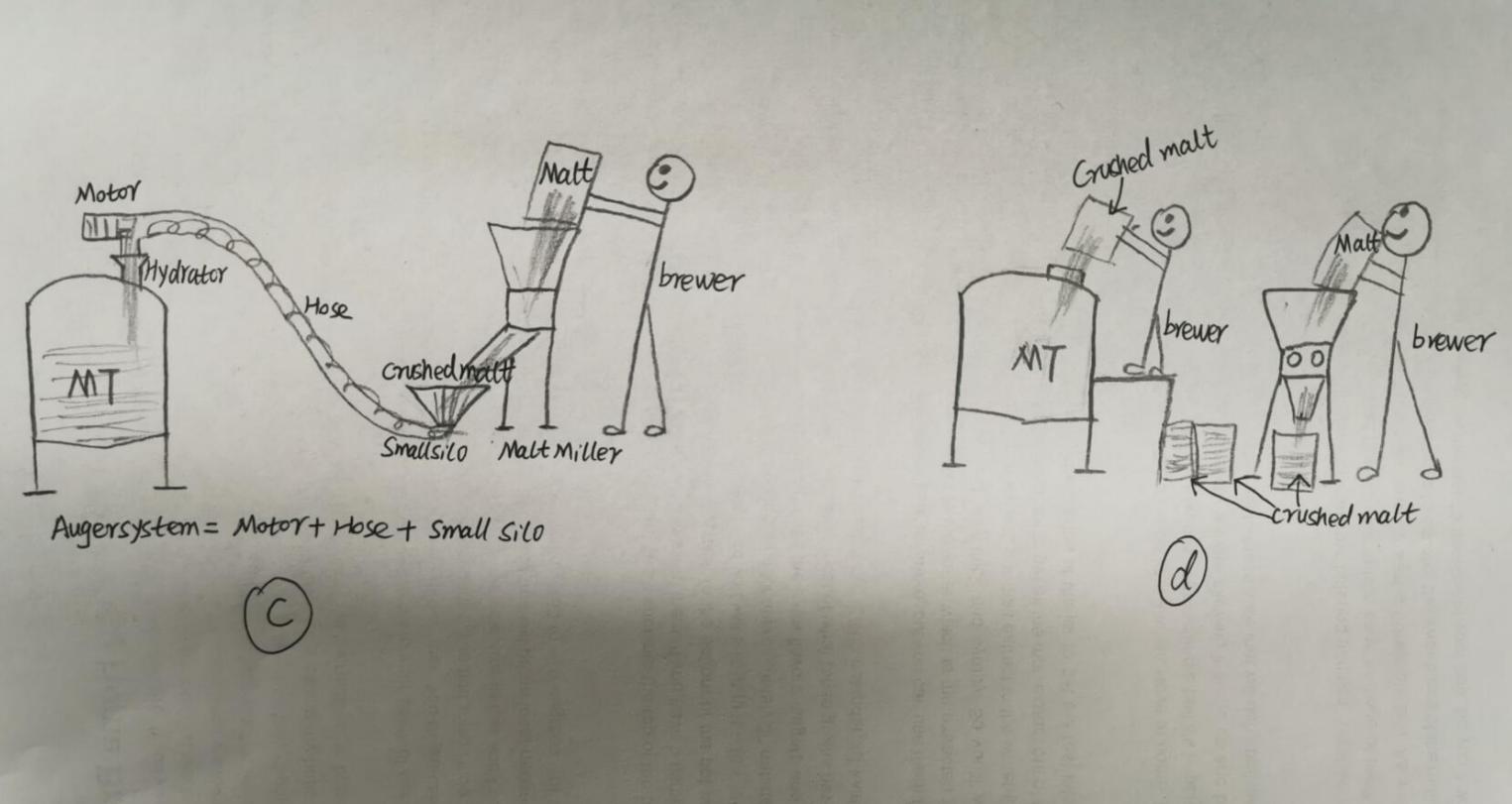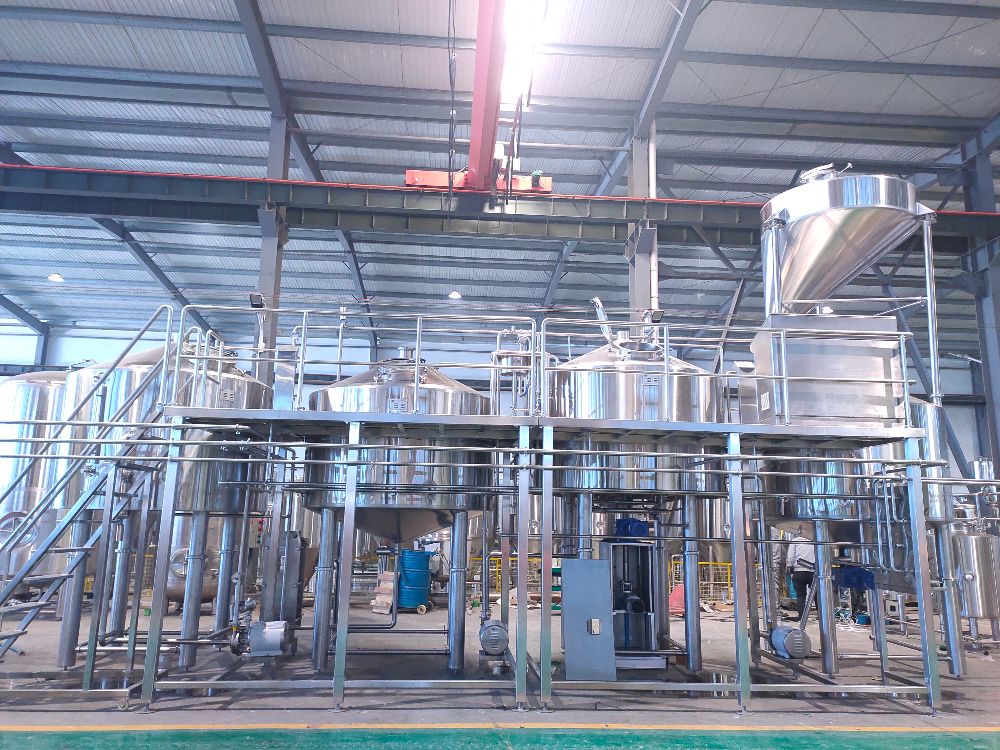Malt feeding options for small brewery
- May 24, 2019
- 188
- tiantai
Malt feeding options for small brewery
The malt feeding is the first step of brewing beer in small brewery. It is a easy work but also important. Here many factors that effect the malt feeding solutions: brewing process, building space condition, budget, labor etc. So here we made simple draft drawings to introduce 4 of the popular malt feeding ways. Hope they bring you some reference idea on your brewery plan.


Methods a:
It takes use of the second floor.
No auger system is needed.
A small grain hopper (It can be also big hopper) go up through the second floor.
The miller is put on a work platform.
So when the miller is milling the malt, the milled malt directly drop into the small hopper.
Methods b:
There is a big hopper above the mash tun to store a batch of grain, then the milled grain drop into the MT together.
But the total height will be very high for the brewhouse plus the hopper.
So if the ceiling is limited, this method is not suitable.
Methods c:
It is modified based on method b.
For some conditions, when the ceiling is limited, the hopper can be removed so the auger is connected onto the hydrator directly.
Disadvantage: The milling process for a batch of grain takes around 30-40 minutes, so the same batch of crushed malt drop into the MT in different time.
There will be 30-40 minutes time difference. It means that the malt starts the mash process at different time. Some brewers concern that this difference will effect the wort composition. Some brewer do not think that make much difference.
Method d:
It is the most manual method to fill the grain into the mash tun.
The brewer pull the grains into the miller firstly, and meanwhile there is a empty bag or vessel to hold the crushed malt under the miller outlet,
and then the brewer pull the crushed grains into the mash tun manually.
This saves money for buying the beer equipment, but it takes most labor.
Welcome to exchange ideas.
Edited by Jana Wang
[email protected]
The malt feeding is the first step of brewing beer in small brewery. It is a easy work but also important. Here many factors that effect the malt feeding solutions: brewing process, building space condition, budget, labor etc. So here we made simple draft drawings to introduce 4 of the popular malt feeding ways. Hope they bring you some reference idea on your brewery plan.


Methods a:
It takes use of the second floor.
No auger system is needed.
A small grain hopper (It can be also big hopper) go up through the second floor.
The miller is put on a work platform.
So when the miller is milling the malt, the milled malt directly drop into the small hopper.
Methods b:
There is a big hopper above the mash tun to store a batch of grain, then the milled grain drop into the MT together.
But the total height will be very high for the brewhouse plus the hopper.
So if the ceiling is limited, this method is not suitable.
Methods c:
It is modified based on method b.
For some conditions, when the ceiling is limited, the hopper can be removed so the auger is connected onto the hydrator directly.
Disadvantage: The milling process for a batch of grain takes around 30-40 minutes, so the same batch of crushed malt drop into the MT in different time.
There will be 30-40 minutes time difference. It means that the malt starts the mash process at different time. Some brewers concern that this difference will effect the wort composition. Some brewer do not think that make much difference.
Method d:
It is the most manual method to fill the grain into the mash tun.
The brewer pull the grains into the miller firstly, and meanwhile there is a empty bag or vessel to hold the crushed malt under the miller outlet,
and then the brewer pull the crushed grains into the mash tun manually.
This saves money for buying the beer equipment, but it takes most labor.
Welcome to exchange ideas.
Edited by Jana Wang
[email protected]


.jpg)

